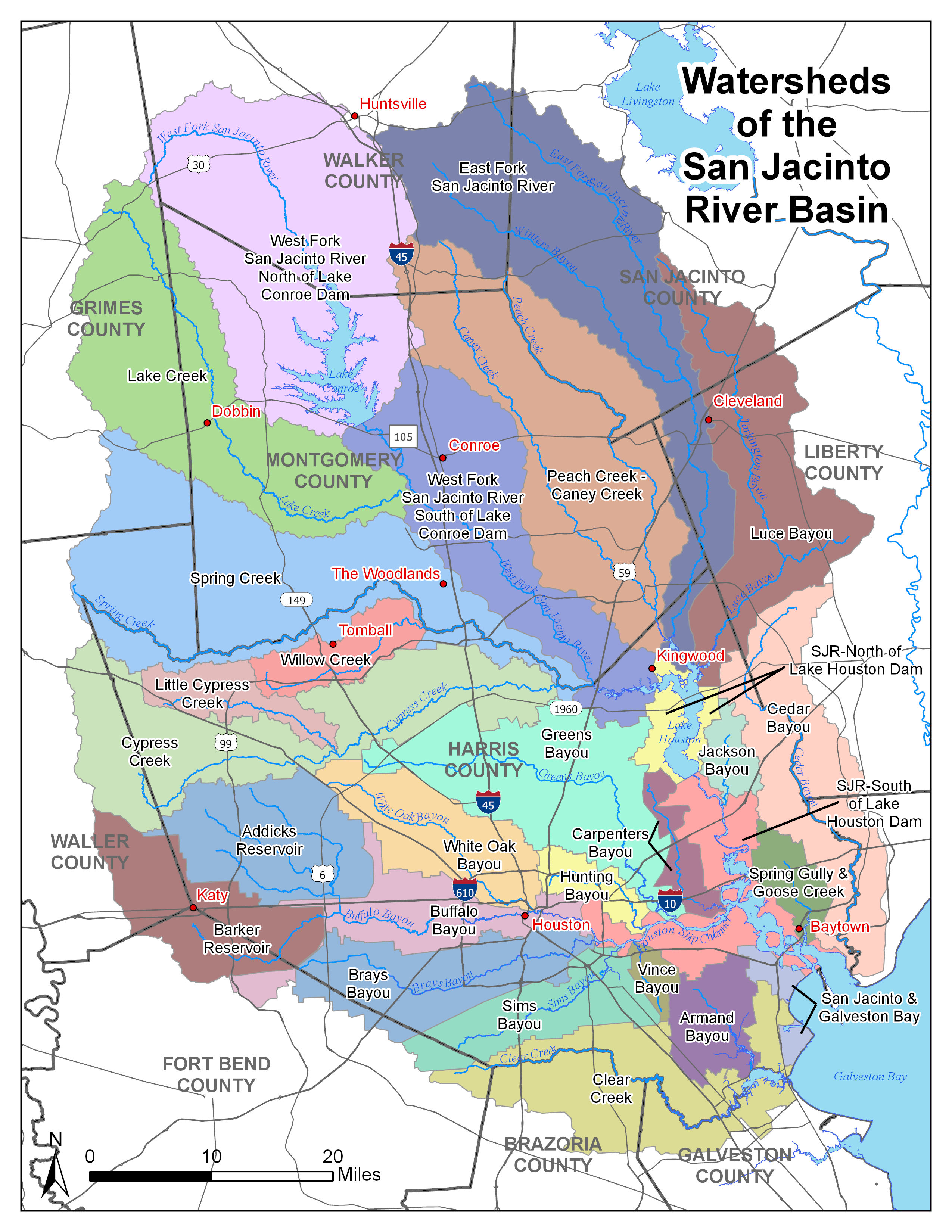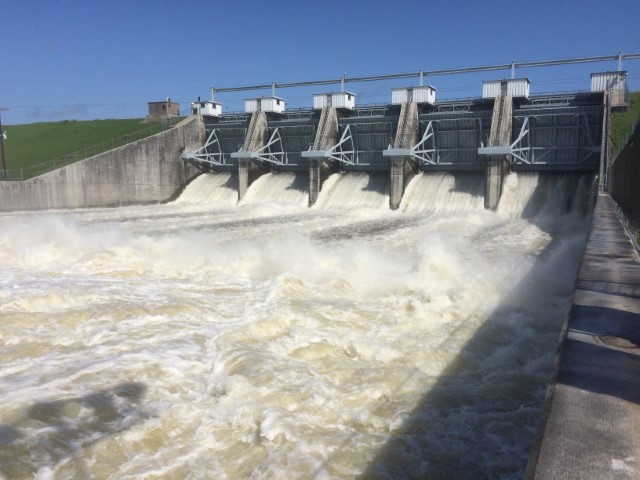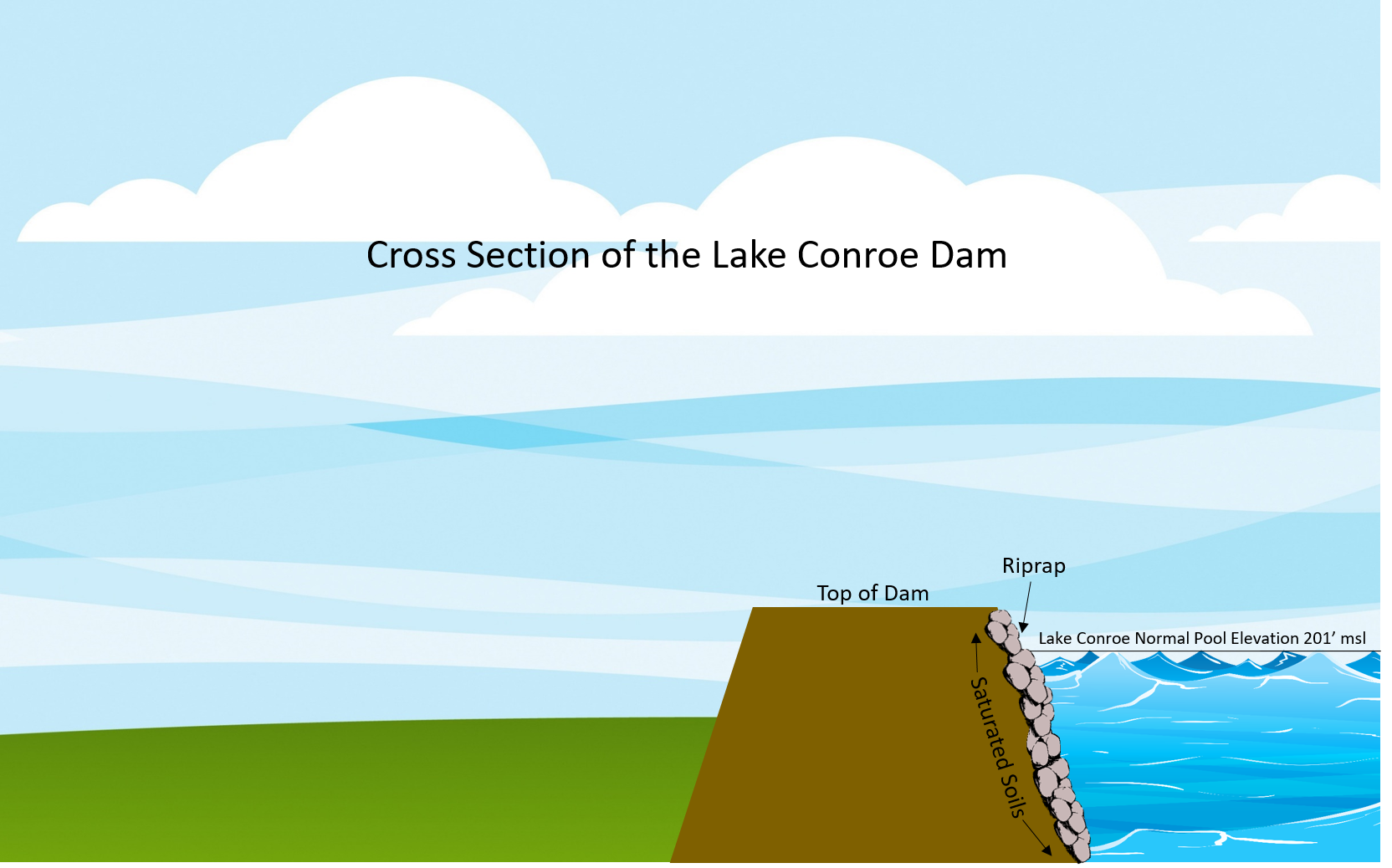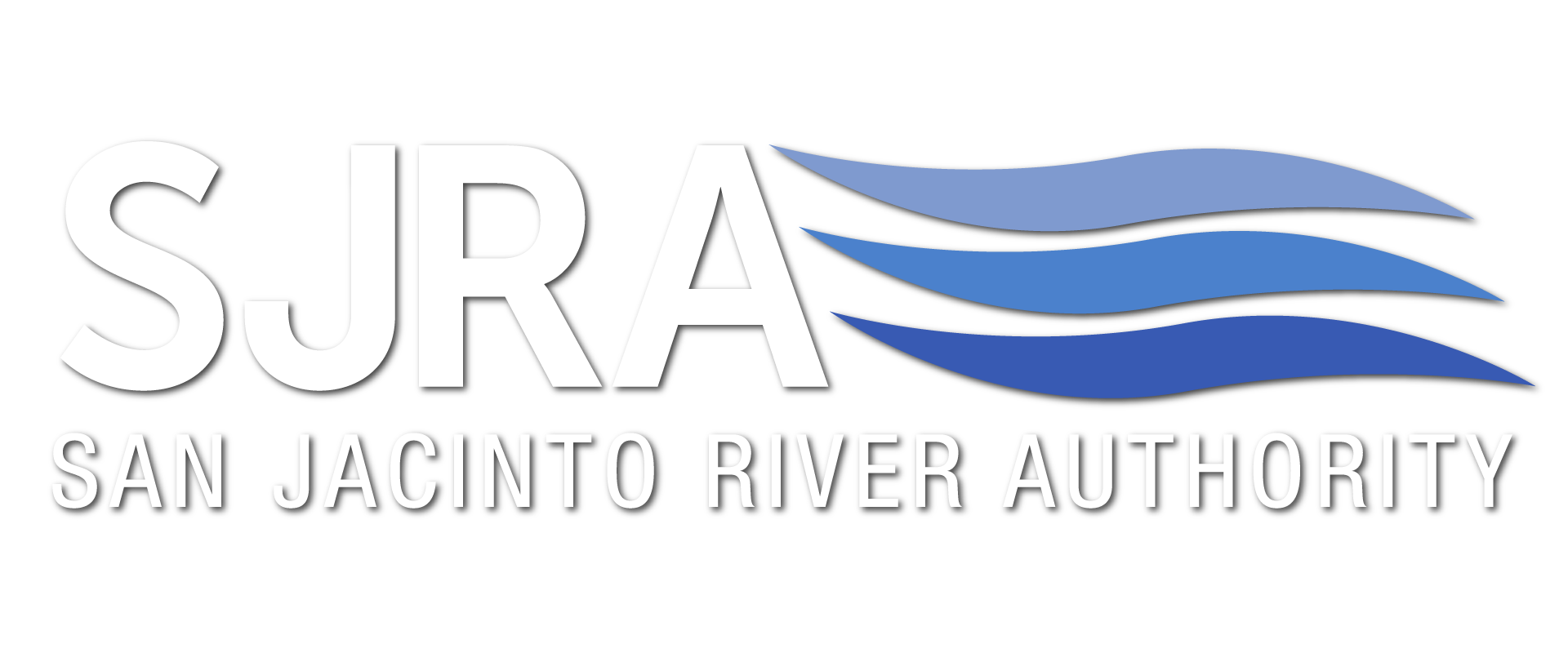By: Bret Raley, SJRA Lake Conroe Division Manager.
The San Jacinto River Authority (SJRA) receives inquiries from the public on a wide variety of issues. Regardless of whether the questions are received via email, webmail, social media, or telephone, there is one particular question that continues to be asked time and time again, “Why don’t you let water out of the reservoir in advance of a storm?” Or put another way, “Why doesn’t SJRA pre-release?” There are a number of reasons why officials from across the state, including SJRA, make it a policy not to pre-release from a reservoir in advance of a storm.
It would take several weeks to safely let water out of Lake Conroe at a rate that does not cause or exacerbate flooding downstream. Unfortunately, weather forecasts are not accurate enough, especially several weeks in advance, to accomplish a meaningful decrease in lake elevation. A pre-release of water would prematurely fill the river leaving less storage capacity to accept natural rainfall and runoff. If rains subsequently fell primarily downstream of the dam, we could potentially make downstream conditions worse having pre-filled the river.
Preserving the structural integrity of the earthen embankment also contributes to the decision. The dam at Lake Conroe consists of an engineered earthen embankment that is approximately two miles long and includes five tainter gates where water is released during storm events. The earthen embankment portion of the dam was never intended to be overtopped, and the tainter gates are also not designed for water to flow over the top of the gates. That’s why the gates are gradually raised during storms to allow water to pass underneath. The engineered earthen material that makes up the dam is saturated below the surface of the water. If the lake were to be lowered too quickly, the reduction of water pressure against the dam could cause instability of those saturated soils. This is a concept known as rapid drawdown, and it is a serious concern of dam safety engineers. Furthermore, if water is pre-released from the reservoir and the area does not receive the predicted rainfall, precious supplies of water will have been unnecessarily depleted. Dam safety officials from the Texas Commission on Environmental Quality do not recommend pre-release for these reasons and more.
People also ask, “Why does Lake Houston Pre-Release?” There are several differences between pre-release from Lake Houston and pre-release from Lake Conroe:
- Proximity to the coast with limited downstream urban development compared to Lake Conroe.
- Water released from Lake Houston has a much shorter distance in river miles to the coast compared to Lake Conroe. This short reach to the coast affords them the opportunity to pre-fill the river downstream of the Lake Houston spillway with minimal potential for causing flooding issues. The water has a much shorter distance to get to Galveston Bay.
- Lake Houston is much smaller in size than Lake Conroe, so Houston has the ability to reduce the level of Lake Houston a couple of feet at a safe release rate because the reservoir is much smaller.
- Lake Houston is much smaller in size compared to Lake Conroe, but the contributing watershed for Lake Houston is much larger than the contributing watershed for Lake Conroe. So if the water level in Lake Conroe were to be lowered and the rainfall predicted over our watershed did not materialize, it is very difficult to replenish the water in Lake Conroe – a water supply reservoir. Alternatively, if the City of Houston lowers Lake Houston prior to a storm event, and the rainfall event does not materialize, it only takes a small amount of rainfall over Lake Houston’s 3,000 sq mile watershed to replenish the water in this smaller reservoir.
One of the major river authorities in Texas, SJRA’s mission is to develop, conserve, and protect the water resources of the San Jacinto River. Covering all or part of seven counties, the organization’s jurisdiction includes the entire San Jacinto River watershed, excluding Harris County. For additional information on SJRA visit our website at www.sjra.net, like SJRA on Facebook @SanJacintoRiverAuthority, and follow us on Twitter @SJRA_1937.
Featured in the September, 2019 Issue of Dock Line Magazine.





